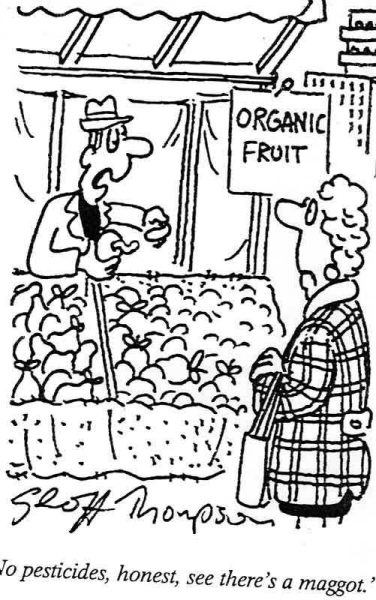Bee Dee for me
Over the last ten or so years, I keep hearing the term (within the wine world) Organic and Biodynamic being thrown around, almost, in the same breath. As if it is has the same connotation, which it surely does not.
A common phrase used at wine tastings and in wine shops, these days, is “this wine is organic biodynamic” as if the two phrases mean the same or are infact one.
Having spent some time, a while ago now, on an intensive BD (Biodynamic) course at Emerson College, I can vouch for the fact that there is indeed quite a bit of difference between the two labels, so to speak. The organic one, I am not going to go into now as it carries so much sway, and most people get the idea anyway, even if the idea is that apparently the product is a better one because it is labeled organic (and probably costs more than the conventional version), so customers are happy to drink something called an ’organic wine’, for lifestyle or even health reasons? In some parts of the world, wine producers are so keen to label there wine ‘organic’ just to charge a little more and to show that they are apart of an alternative wine movement, when infact they are no more organic than a pile of dog poop found on the street or in the park and probably taste something similar. Of course there are organic grape growers who want to make a wine with less chemical intervention, and they go to the effort, and it’s no mean feat, of being certified by the Soil Association or the like in their area, as they genuinely want to make a better wine without the use of chemicals (or less chemical intervention that is).

For those who are interested in what the BD concept is (read on), and if I can keep it as clear and simple as possible, all the better, as the word, Biodynamic (BD), can still be like waving a red-rag to a bull. It really does get some people stomping up and down, when it is just not necessary.
So, I am taking this opportunity to jot down a few words, that maybe useful. It has been a quiet January, so it gives me the opportunity here to explain briefly a little about the first two, and most important BD preparations. (There are infact eight in total: 500 and 501 to 5008)
One of the physical differences with BD viticulture is the use of homeopathic remedies called preparations. These preparations are used to create long and short term beneficial effects to the soil, the vines (and surrounding plantlife), animals, humans and the environment.
The preparations are very specific indeed and are always applied as a spray. They are there to help enliven the soil and to sensitize the compost to the subtle differences of the cosmos. The preparations are always made in a cow horn (much to people’s amusement for some reason). So why are cow horns used? Well the horn is made from Keratin which is the same material from which our fingernails are made of. The material is very strong and resistant to chemical attack. The quality of the horn encourages reflective properties for enhancing environmental forces. Due to it’s constitution it concentrates these forces. These, in turn, work on the substances filled into the horn. The substances contribute their particular qualities to the preparation, and are amplified by the horn sheath.
Preparation 500 (we could call it the horn manure) is used to stimulate soil vitality and encourage vines to connect with the specific growing conditions of their growing site. It also encourages deeper rooting systems, increased earthworm activity and a better retention of soil moisture. It is an ingredient in root tips (used also in grafting/transplanting), in tree paste (fruit trees) and can be used as a seed bath treatment aswell.
It’s prepared by taking fresh cow dung that has been collected in the autumn from fields with mature grass. The latter is particularly important because mature grass accommodates ingredients and forces from the vegetation period and not only from a short time span. This will be reflected in the manure through the perception of the cow. The cow horns are then filled with manure and buried 30-40cms deep in active soil in a way that no drain water can gather them. They stay in the soil from the end of September to the next Easter. During this time fermentation takes place in the horn and all forces that act on the dung are reflected by the horn and through this are intensified. After Easter the horn is dug out of the soil and the preparation is taken out and kept in a cool and protected environment, preferably in an earthenware pot surrounded by peat and to be taken out when it is going to be used.
One unit of horn manure is sufficient to treat approximately half a hectare. It needs to be dissolved in about 10 to 15 liters of water, stirred vigorously for one hour using a hand or a stick and sprayed out in droplets on to the vineyard. The exact proportion is not crucial and smaller amounts can be used. On larger areas the amount of preparation in relation to the amount of water can be reduced by up to a third.
The time to spray the 500 should be either in the late afternoon or early evening, mild and overcast days are preferable. Heavy rain, high winds and frosty weather should be avoided and during dry sunny spells spraying can be delayed until close to sunset for maximum potential. It can be applied to all areas. Wherever the earth is turned or ploughed, or can breath, we can apply 500. It also applies to when we plant or graft/transplant. Spraying an area three times in succession, with the same stirring, has proved beneficial as have repeated applications during times of drought.
If you find this explanation interesting, I will now jot down the story of the next essential preparation, known as Horn Silica 501.
 Preparation 501 is used during the growing season to enhance the qualities of growth and maturation. It helps stabilize and balance plant metabolism and also increases nutritive value. The keeping qualities of a wine are improved a lot as are the natural sugars and dry matter content. Now, in contrast to preparation 500, which is applied to the soil, in general, 501 is used in a much more specific way to enhance the quality of the vine’s growth cycle and it’s follage. It is first applied when the buds and leaves arrive on the vine and then later when the fruit begins to appear and ripen. It enhances light qualities in the vineyard. The general rule is to spray where the part of the vine which will later be harvested or begin to form. In other words the green area and where the grapes will form.
Preparation 501 is used during the growing season to enhance the qualities of growth and maturation. It helps stabilize and balance plant metabolism and also increases nutritive value. The keeping qualities of a wine are improved a lot as are the natural sugars and dry matter content. Now, in contrast to preparation 500, which is applied to the soil, in general, 501 is used in a much more specific way to enhance the quality of the vine’s growth cycle and it’s follage. It is first applied when the buds and leaves arrive on the vine and then later when the fruit begins to appear and ripen. It enhances light qualities in the vineyard. The general rule is to spray where the part of the vine which will later be harvested or begin to form. In other words the green area and where the grapes will form.
Now, how is 501 prepared? It is made out of quartz crystals ground into a fine powder and then moistened into a paste that is then filled into a cow horn and sealed with clay. The horn is then buried, just like the 500, but the difference is that it is buried NOT during the winter months (everything is in reverse for the southern hemisphere of course) but from Easter to the end of September. When it is dug out in September the preparation substance is taken out of the horn and stored in a clear glass jar, and stored in a light place. Allowing the light to penetrate the glass container. The 501 already carries crystallizing winter qualities within it’s structure. Thus it is exposed to the summer qualities, contrary to the winter forces of 500, in order for the whole cycle of the year to be captured.
You are now asking, when should 501 be sprayed? It should be used early in the morning, as close to the sunsrise as possible when the dew or morning moisture is still lying on the ground. If it is possible to chose a day that is going to be sunny, the better as it helps the light influences to take full effect. However, be aware that if it sprayed too late in the day when the sun is already high in the sky, there is a danger of burning the vine and it’s leaves. It can also be applied in Spring time where it can enhance the final stages of the ripening fruit. It must also only be used on a vineyard where 500 has already been applied.
The Manure (500) and Quartz (501) as substances are in many ways polar opposites. Manure comes from the present, reflects the summer, expresses expansion forces, carries forces from the living realm, is soft, includes water and has a strong earthly relationship. The Quartz is developed in the past, represents crystalizing winter aspects, expresses contraction forces, is a dead mineral, it is very hard, rejects water, and has a relationship to cosmic influences. With this in mind and with the addition of the vortex stirring procedure we can come to the conclusion that the alchemical forces at work within the horns are brought to a higher vibrational state, and when applied to the Earth or atmosphere create long and short term beneficial effects to soil, vines (plants) animals, humans and the environment.
If there is time in the future, and there is interest of course, I will jot down the story of preparations 502, 503, 504, 505, 506, 507 and 508.